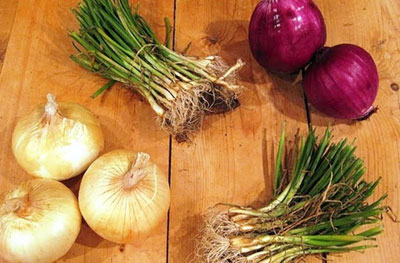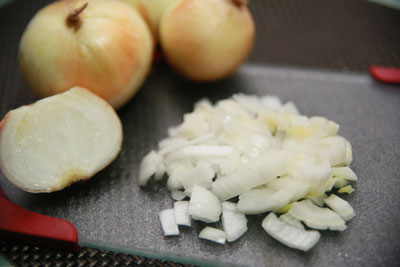 As in a good movie with scenes of tears, laughs, and tasteful delights, your venture with onions will boast the same sentiments. Vidalia, Spanish, yellow, white and red - onions can and should be your flavor backbones in the kitchen.
As in a good movie with scenes of tears, laughs, and tasteful delights, your venture with onions will boast the same sentiments. Vidalia, Spanish, yellow, white and red - onions can and should be your flavor backbones in the kitchen.
Thinly sliced in a salad, fried in rings, sweated and sweetened, or adding zing to a burger or hotdog, these powerhouse bulbs have flavored meals and dishes for centuries. No other vegetable brings tears to my eyes as these subterranean roots do…I digress.
Synonymous with onion across the Deep South and country is the Vidalia – a sweet, crisp member of the genus Allium. Soil conditions in that part of South Georgia create an anomaly for these surprisingly sweet onions to grow and flourish. Yet, even if you and your garden are not in the legislatively approved section of Georgia to produce quote Vidalias unquote, growing onions and other members of their family in your home garden is easy and quite rewarding.
Here in the Deep South, zones 7 and 8 especially, onions can be planted in the winter garden for spring and summer harvesting. I like to buy bulbs and onion plants from good sources such as Bonnie Plants which can be found from hardware stores to big box stores across the South.
 Onions need a loamy, rich soil that can be easily broken, prodded, and dug into for planting and harvesting onions. An old adage with planting onions in winter is “if you can poke a pencil into the soil and move it around, then you can plant onions.”
Onions need a loamy, rich soil that can be easily broken, prodded, and dug into for planting and harvesting onions. An old adage with planting onions in winter is “if you can poke a pencil into the soil and move it around, then you can plant onions.”
Plant your onion plants about an inch or so deep, four inches apart… just don’t plant them too deep. As the plant “bulbs” or becomes much fatter, even emerging from its mounded planting site, and develops a hearty topping of greenery, loosen the soil around the bulb for easy harvesting. Don’t forget to water and fertilize your onions with a good fertilizer such as 10-10-10 or 10-20-10. Bonnie Plants’ site and Wikipedia have awesome tips and history on onions…does this officially make me a plant nerd? Oh well…
If your garden space is limited, try gardening and growing onions and other veggies in half barrels, large pots, or raised beds; or grow smaller varieties of Alium such as chives. The onion is totally edible in its various growing stages, but those fat, tasty bulbs are the punch of flavor most desired. Leeks, shallots, and garlic are all cousins to the onion and each have a place in the garden and kitchen. A few tips on cooking with onions from this Farmer’s kitchen:
- Invest in a good chopper…crying rivers of tears over onions can be avoided with these contraptions. Plus, the tiny bits of the finely chipped and chopped onions brown fast and easily, adding amazing flavor to most any dish.
- If chopping and slicing with a knife, light a candle nearby to help reduce the fumes that cause our eyes to tear up. A fan and good air flow help too!
- Roasted onions are incredible! A red onion with carrots and potatoes is a simply elegant dish or a bed of these purple hued onions for your meat is delicious and beautiful.
- “Sweating” onions, or using heat to bring out the onion’s sweetness, is highly recommended for tasty additions to dishes or as a side in and of themselves. Butter, oil, and beer are all great vehicles to “sweat” your onions in and remember to add a dash of salt to bring out the moisture too. A lower heat and covered dish is the ticket to sweet sweated onions. Oil for temperature and butter for flavor – a cardinal rule in the kitchen!
- Browning your onions before adding them into other dishes, such as squash, meatloaf, chicken salad, or pasta, gives these bulbous veggies a sweet and salty combo that escalates any dish to top notch. The main difference between browning and sweating is temperature. Chopped onions in hot oil and flavored with butter, salt, and pepper, is a step that will make a good cook a better cook quickly!
- Your centerpieces can even be accented with onions. A bowl of peeled red onions is stunning on their own or mixed with cabbage or kales. Tiny seedlings banded with raffia make great party favors too.
- Experiment with different cousins of this fun family for different flavors and dishes. Whether you garnish with chives, sauté with shallots, or roast with Vidalias, keep onions as a main player in your cooking repertoire. Growing and harvesting and then cooking your onions are fun ways to meld the garden and home together.
James T. Farmer III was born and raised in Georgia, where he continues to live and work as a landscape designer. He shares his love of food, flowers and photography on his blog All Things Farmer.

